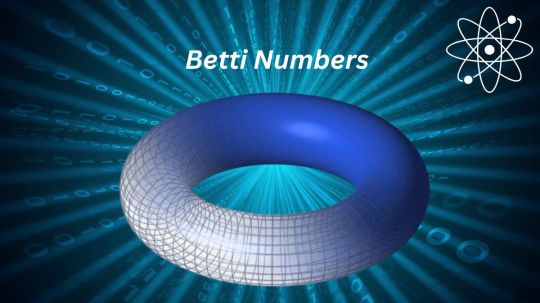#GaussianBosonSampling
Explore tagged Tumblr posts
Text
Quantum Device Maps Data Shape with Betti Numbers & Cliques

Betti Numbers
Babbage, a quantum processor that can instantly reveal complex networks' topological features, advances network research. Shang Yu, Jinzhao Sun, and their Imperial College London and Queen Mary University of London colleagues' programmable device measures Betti numbers and cliques to increase complex system knowledge.
Network architecture controls behaviour in the brain, sophisticated materials, and social relationships. Locating higher-order structures and detailed relationships beyond basic links in these networks can be too computationally demanding for standard methodologies. Topological Data Analysis (TDA) in the quantum method provides a powerful new tool. TDA uses algebraic topology to find global properties like Betti numbers and Euler characteristics that other methods miss to disclose data's "shape".
Understanding Cliques: Network Building Blocks
The core of Babbage's abilities is clique recognition. Cliques are dense, strongly linked network subgraphs. They show tightly connected node clusters. Complex networks are built from these densely linked groupings, which are crucial to understanding their structure. All k-cliques must be identified to build the simplicial complex, a geometric representation needed for TDA.
How Babbage Finds Cliques:
Babbage describes network data using his unique polarisation and temporal encoding architecture. Quantum sampling method Gaussian Boson Sampling (GBS) is then utilised. GBS encodes network connections and intensities into photon behaviour using a reconfigurable quantum circuit. The processor prioritises and determines cliques that determine a network's topology by studying photon interactions.
One benefit of GBS is its inclination towards higher-weight cliques. The processor automatically samples and highlights subgraphs with stronger connections, which are often more relevant in practical applications. This bias minimises the search space, making it faster to find relevant cliques in big or strongly weighted networks than uniform or other quantum-inspired classical techniques. Even for quantum computers, listing every k-clique is computationally difficult. GBS streamlines the search and focusses on promising regions, which has practical implications.
Betti Numbers Link Cliques to Topology
Clique identification is the initial stage in revealing a network's topological features, especially Betti numbers. Betti numbers measure modular structure, redundancy, and connectedness by counting topological “holes” in multiple dimensions of a dataset.
The Beta-zero (Beta-zero) figure indicates the number of connected components in a network, indicating its cohesiveness or fragmentation. Beta-one (β₁): Counts one-dimensional loops or cycles to identify communication channels or redundant links in the network. High-order Betti numbers, like β₂, reveal intricate structures and elaborate multi-dimensional characteristics like holes and cavities. Computing Betti Numbers with Babbage: Babbage's GBS studies yield k-clique information for a boundary matrix. This matrix encodes how edges generate triangles. By counting k-cliques and calculating the matrix's binary rankings, the Betti numbers can be precisely obtained. Betti number computation is #P-hard, therefore traditional computers cannot compute it as dataset sizes expand. Babbage gives a new quantum approach to overcome this limitation.
Topological Phase Transitions and Clique Percolation
Babbage offers unique insights on network architectural evolution beyond static analysis. The processor can detect “topological phase transitions” where a network's organisation changes by monitoring Betti numbers. The loss of the Euler characteristic, another topological invariant obtained from Betti numbers, indicates a substantial shift in the network's global connectedness at these critical sites. Euler entropy helped researchers establish when these shifts began. This capacity could be employed as a therapeutically relevant topological diagnostic to distinguish glioma sufferers from healthy people.
Clique percolation, the creation of large, interconnected clusters in a network, is also identified by Babbage. The processor can effectively identify key transitions and topological damage by measuring quantum sampling data entropy. This method eliminates the need for a complete list of k-cliques because Rényi entropy variables closely mimic percolation behaviour and are sensitive percolation indicators.
Wide Uses and Future
The results demonstrate the power of quantum approaches to disclose sophisticated topological properties that classical methods cannot describe. Babbage's expertise is useful in:
Neuroscience: Understanding brain function and network structure. Materials Science: Studying strong conduction and structural dynamics to enable protein engineers build rationally. Social Dynamics: Social interaction framework. High-Energy Physics: Analysing complex basic physics systems. Babbage's modular design supports multi-core and distributed implementations and includes a roadmap for fault-tolerant photonic computing with non-Gaussian operations. Classical simulation is intractable when the system includes hundreds or thousands of modes, allowing true quantum computational advantages under practical experimental conditions. This could revolutionise complicated system analysis and solve unsolved scientific challenges in many fields.
#TopologicalDataAnalysis#cliquesofsizek#GBSuses#GaussianBosonSampling#quantumsamplingmethod#quantumcomputers#topologicalphasetransitions#technology#technews#news#govindhtech
0 notes